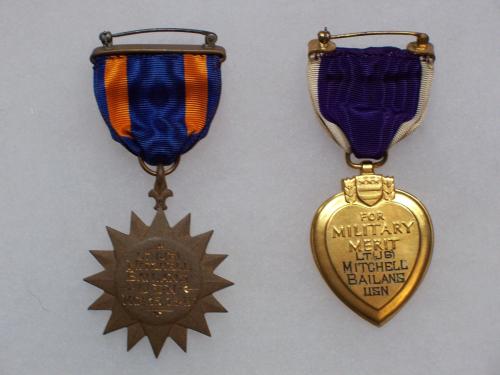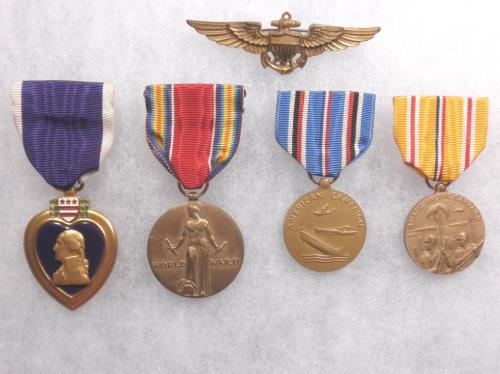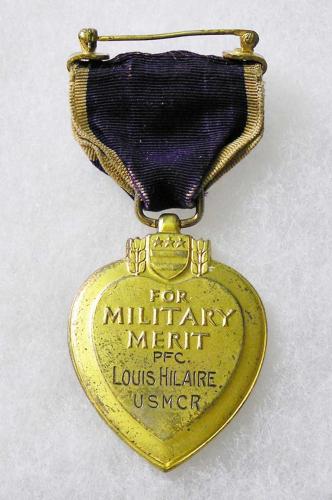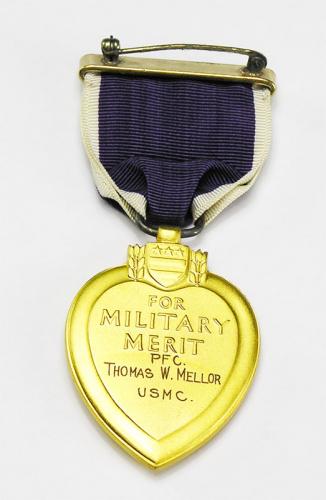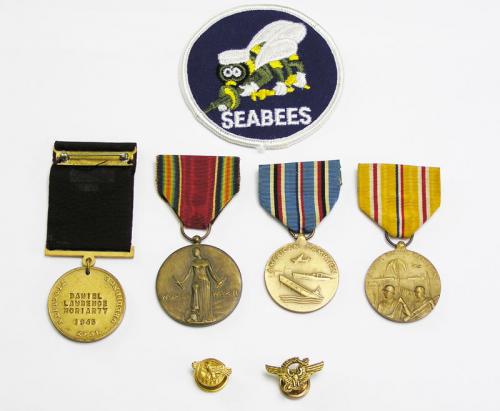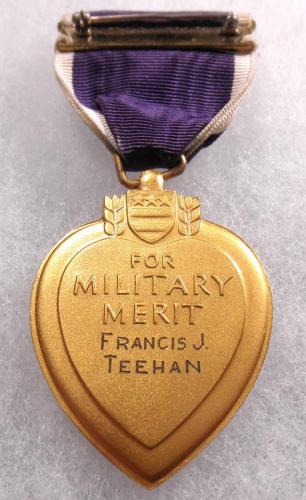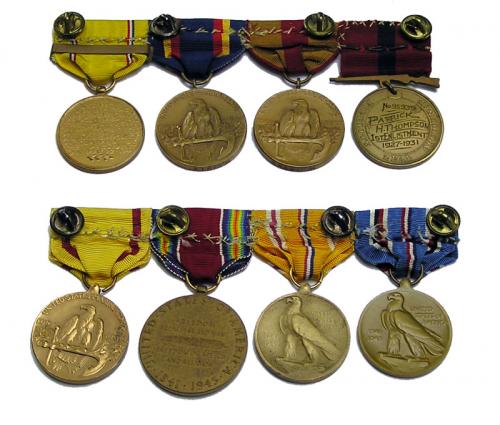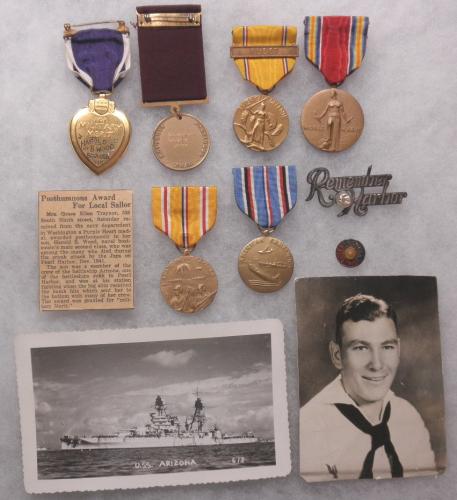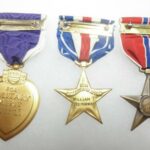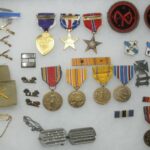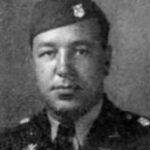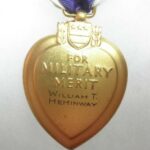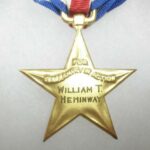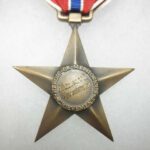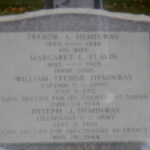William Trebor Heminway was born July 8, 1912 to his parents Trebor and Margaret. He was the commanding officer of Co. K, 106th Infantry. He left a widow, Janet, who subsequently resided in California. Heminway had enlisted in the New York National Guard on June 14, 1935 and advanced to 2nd Lieutenant on March 11, 1940 in Company C of the 10th New York Infantry. He was shown as being federalized in the 27th Division on October 15, 1940.
He was awarded the Bronze Star for action on Entwetok on February 19-20, 1944. He was awarded the Silver Star for action on Saipan June 23, 1944. Capt. Heminway was killed in action on Saipan on June 24, 1944. He was initially buried in the 27th Division Cemetery on Saipan, and was later reinterred in St. Patrick's Cemetery in Watervliet, NY, his home town. He is buried next to his brother Joseph who was killed in action November 26, 1944 in France. A photo of the gravesite is included in the group. A copy of the Watervliet News with a picture and story about William is also part of the group.
This is a huge group of medals, insignia and paper that will be described below.
In addition to what is described above, the group includes Captain Heminway's officially engraved posthumous slot brooch Purple Heart, Silver Star and Bronze Star, combat infantryman's device, shooting badges, collar devices, 2 106th Regiment DI's, NY National Guard medal, Victory medal, Asiatic/Pacific Campaign medal, American Defense medal, American Campaign medal, 2 place ribbon bar, dog tags, and 27th Division patches. Paper includes his IDPF, internet research, book, 27th Division in World War 2, book, Pictoral History of the 27th Division (pre-war), original copy of Infantry Journal dated September 1946 that contains a description of the battle Heminway was killed in, and misc. research done by prior owners of this group.
Capt. Heminway's citations read as follows:
"Bronze Star Citation, 19-20 February 1944, Enwetok. Captain Heminway, when his front lines were held up by enemy strong points, costantly went to the portion of the lines receiving the strongest resistance. When he had lost all his officers but one, Captain Heminway led platoons as well as the entire company, for the remainder of the attack. Captain Heminway's constant display of cool, determined courage was an insiration to the men of the organization during the entire attack."
"Silver Star Citation, 23 June, 1944, Saipan.When an enemy counterattack at dusk coupled with an exploding ammunition dump threatened to divide the division line, Captain Heminway at the risk of his own life exposed himself to the extreme in the midst of flying debris, shrapnel and heavy enemy fire to reorganize and coordinate his lines as casualties mounted and his men were forced from their positions by terrific detonations and devastating quantities of shrapnel. The courage and leadership of Captain Heminway reflect the highest traditions of the service."
Captain Heminway was killed in action after being directed to attack a barren area dubbed "Death Valley". His battalion commander, Lt.Col. Harold Mizony had been given orders to "Advance your lines at once" about midday on the 24th. The battlion commander called Captain Heminway, commanding Co. K and said "Bill, I hate to do it, but I've got to send you out there." An eyewitness, Captain Edmund Love, wrote that in his journal. "Don't apologize, Hi," he said, "I know how it is". Then he said "So long, Hi, it's been damned nice knowing you."Fifteen minutes later, Heminway was shot in the head and died alongside 17 others of his company. Colonel Mizony was to die 4 days later in the battle. He and his wife Dorothy are buried in the Golden Gate National Cemetery.
Link for more info on Captain Heminway:
http://www.fold3.com/page/638762642_william_t_heminway/stories/
Spring 2022 sold to a collector.
